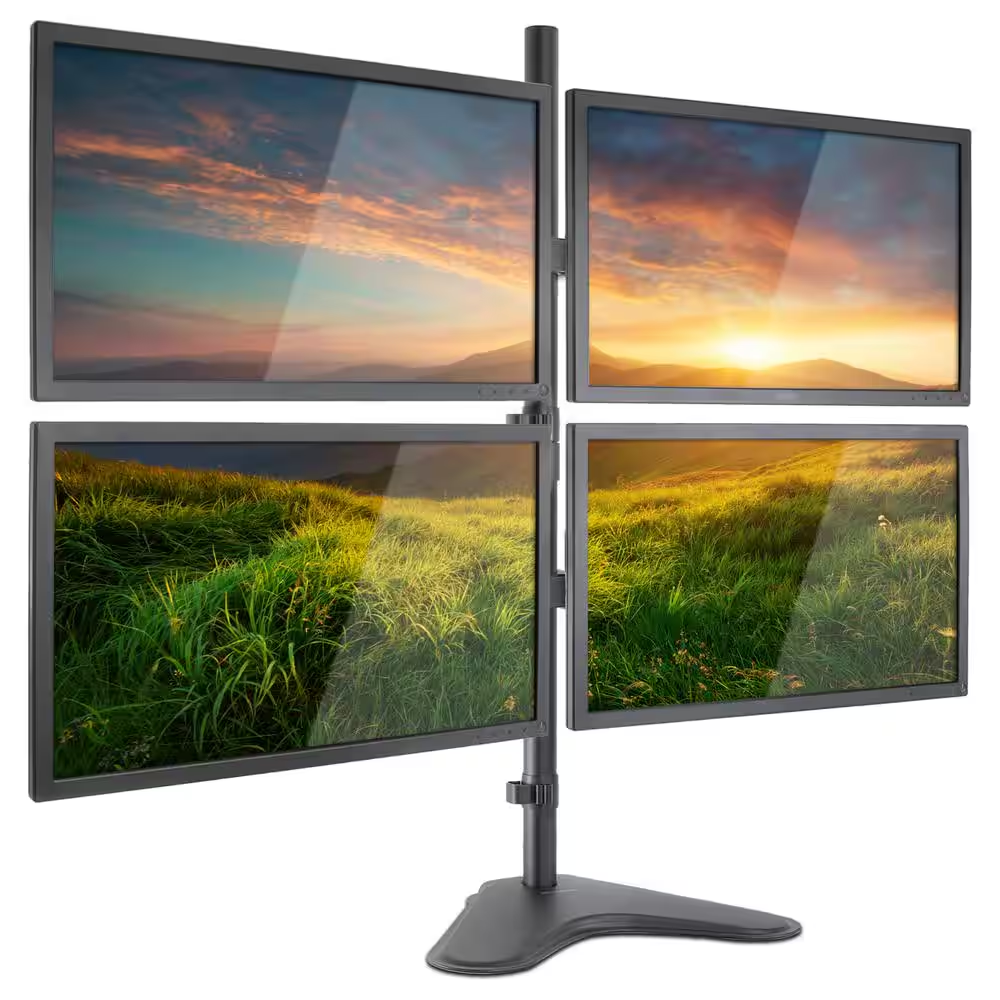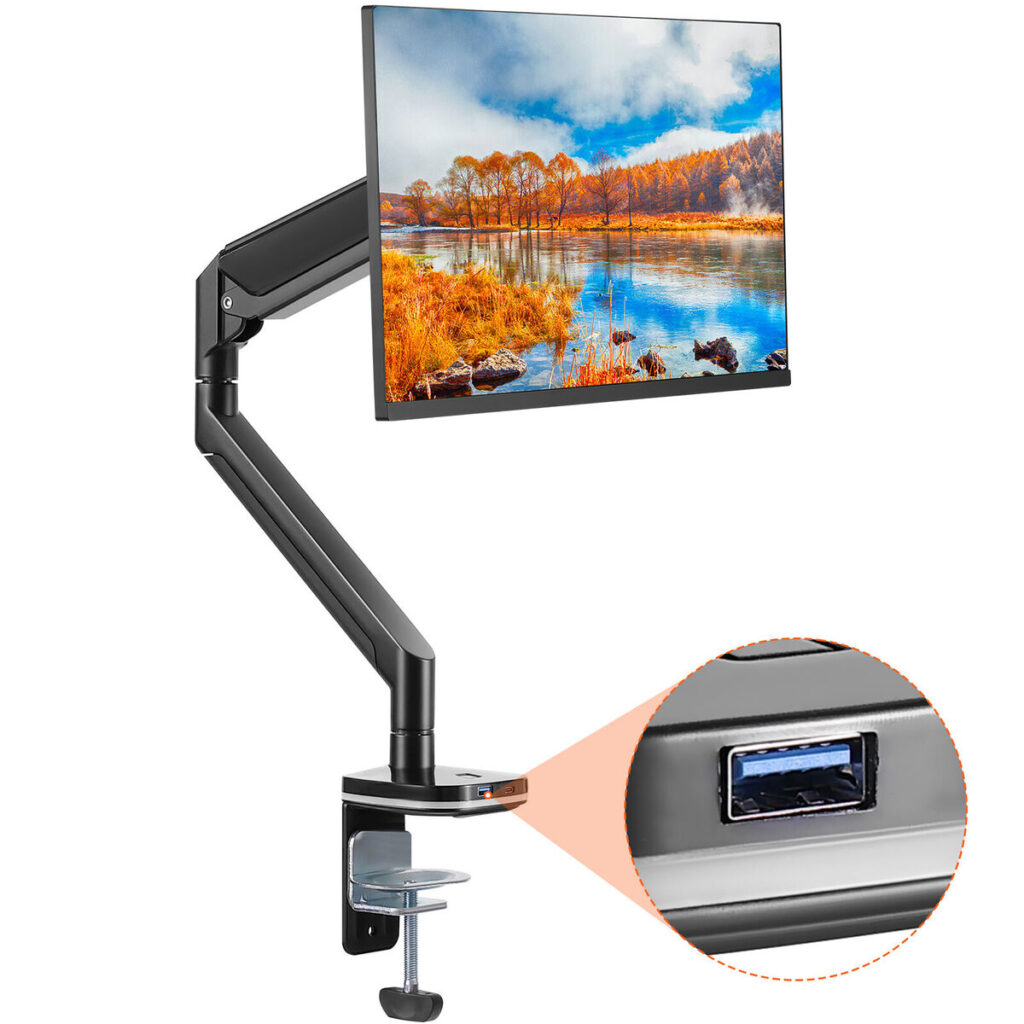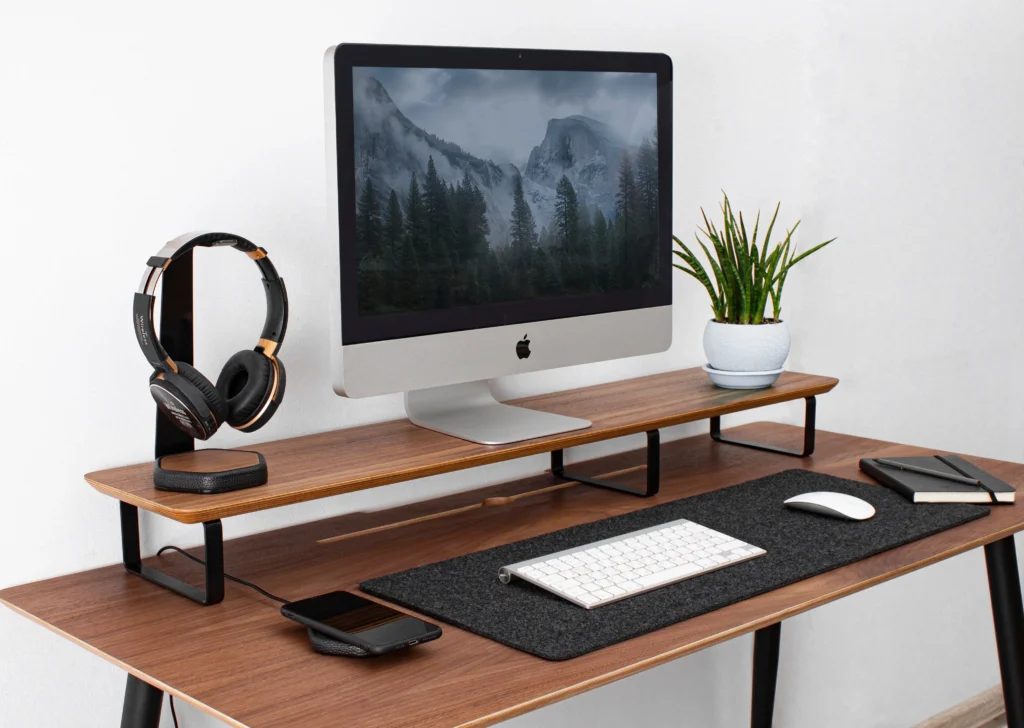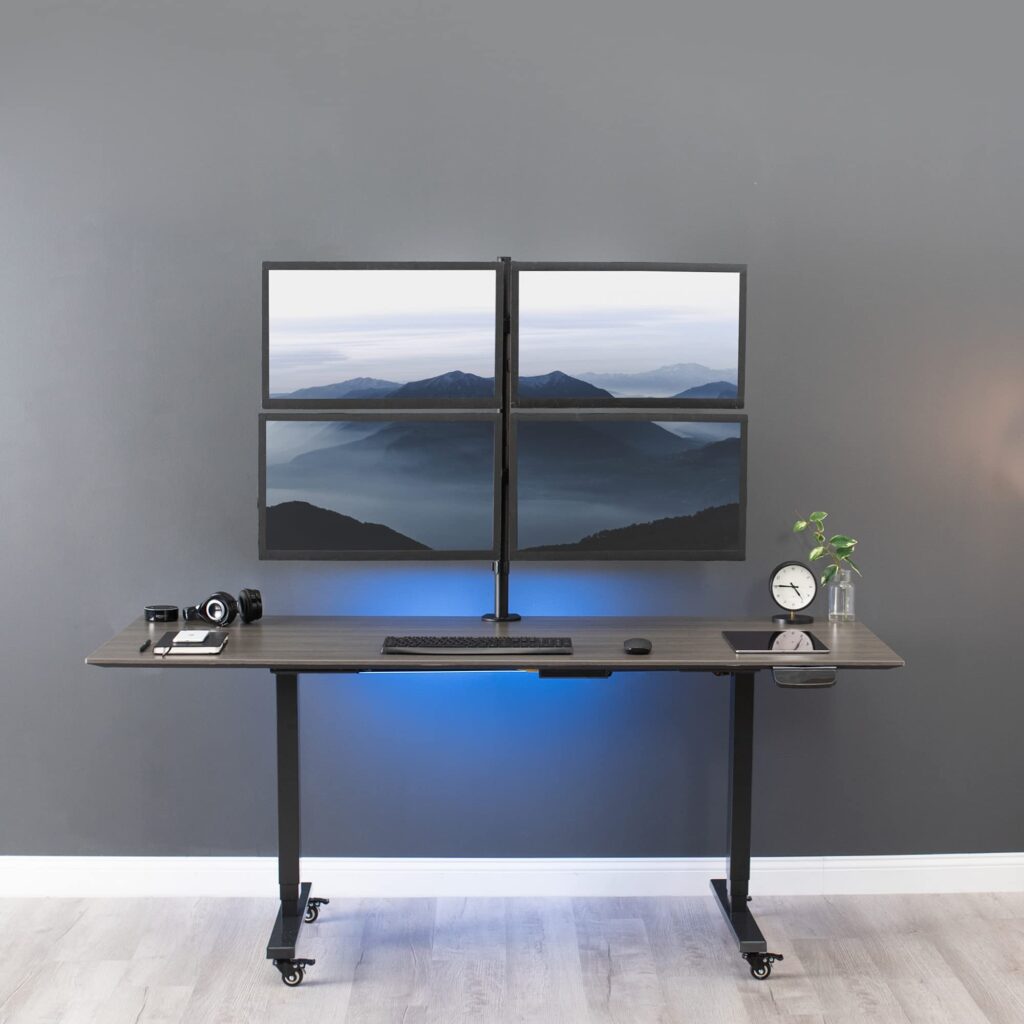Introduction
A monitor stand is more than just an accessory—it’s an essential tool for enhancing ergonomics, improving workspace organization, and optimizing comfort. Whether setting up a home office or upgrading a workstation, selecting the right monitor stand can significantly impact productivity and posture. This guide explores various monitor stands, their benefits, and how to choose the best one for specific needs.In today’s digital era, people spend extended hours in front of screens, making it crucial to maintain a healthy and comfortable workspace. A poorly positioned monitor can cause strain on the neck, shoulders, and eyes, leading to long-term health issues. A monitor stand helps address these problems by raising the screen to an optimal height, ensuring better alignment and reducing the risk of discomfort.

Benefits of Using a Monitor Stand
1. Improved Ergonomics
A well-designed monitor stand elevates the screen to eye level, reducing neck and back strain. This promotes better posture and minimizes discomfort during prolonged work hours.
2. Enhanced Workspace Organization
Many monitor stands feature additional storage, such as shelves or drawers, to keep essential items within reach. A clutter-free desk improves efficiency and focus.
3. Flexibility and Adjustability
Adjustable monitor stands allow users to modify height, tilt, and angle to achieve the perfect viewing position. This adaptability ensures comfort and prevents strain.
4. Better Airflow for Electronics
A raised monitor riser allows better airflow around the computer and other electronic devices, helping to prevent overheating and ensuring longer device lifespan.
5. Aesthetic and Professional Look
A sleek and stylish display stand, like a black walnut screen stand with shelf, enhances the overall appearance of the workspace, making it look modern and organized.
Types of Monitor Stands
1. Adjustable Monitor Stands
Perfect for users who require flexibility, adjustable monitor stands provide customizable height and angle settings, accommodating various preferences and seating arrangements.

2. Wood Monitor Stands
A wood screen stand, such as a black walnut screen stand with shelf, adds a touch of elegance while offering durability. These stands often include built-in storage compartments.

4. Monitor Stand with Cord Hole
Cable management is crucial for maintaining a tidy desk. A screen stand in cord hole ensures that wires remain neatly organized, preventing clutter and tangling.

6. Monitor Riser Stands
A desktop riser stand provides additional elevation, allowing for better eye alignment. It is ideal for standing desk setups or users needing extra storage space underneath.

Key Features to Consider When Choosing a Monitor Stand
1.Improved Ergonomics
A well-designed screen stand elevates the screen to eye level, reducing neck and back strain. This promotes better posture and minimizes discomfort during prolonged work hours.
2. Enhanced Workspace Organization
Many monitor stands feature additional storage, such as shelves or drawers, to keep essential items within reach. A clutter-free desk improves efficiency and focus.
3. Flexibility and Adjustability
Adjustable monitor stands allow users to modify height, tilt, and angle to achieve the perfect viewing position. This adaptability ensures comfort and prevents strain.
4. Better Airflow for Electronics
A raised screen stand allows better airflow around the computer and other electronic devices, helping to prevent overheating and ensuring longer device lifespan.
5. Aesthetic and Professional Look
A sleek and stylish screen stand, like a black walnut monitor stand with shelf, enhances the overall appearance of the workspace, making it look modern and organized.
Frequently Asked Questions (FAQs)
1. Why should I use a monitor stand?
A screen stand helps improve posture, reduce neck and back strain, enhance desk organization, and create an ergonomic workspace.
2. What type of monitor stand is best for gaming?
For gaming, an adjustable screen stand or a dual dispaly stand is ideal for flexibility and multiple-screen setups.
3. Are wooden monitor stands durable?
Yes, wooden monitor stands, especially those made from black walnut, are durable, stylish, and provide excellent weight support.
4. Can a monitor stand help with cable management?
Yes, many stands, like a monitor stand in cord hole, are designed to manage and organize cables effectively.
5. Do I need an adjustable monitor stand?
If you frequently change your seating position or work for long hours, an adjustable monitor stand is highly recommended for better ergonomics.
6. Are monitor floor stands good for office setups?
Yes, monitor floor stands are great for presentations, collaborative workspaces, and setups where a mobile display is needed.
7. How do I choose the right size monitor stand?
Consider your monitor’s size and weight, along with your desk space, to find the best fit for stability and comfort.
8. Can a monitor stand support multiple monitors?
Yes, some stands are designed for dual or multiple monitors, allowing for seamless screen transitions and better productivity.
A screen stand is a valuable addition to any workspace, enhancing both productivity and comfort in the long run. Choosing the right stand depends on individual needs, workspace setup, and ergonomic preferences.


